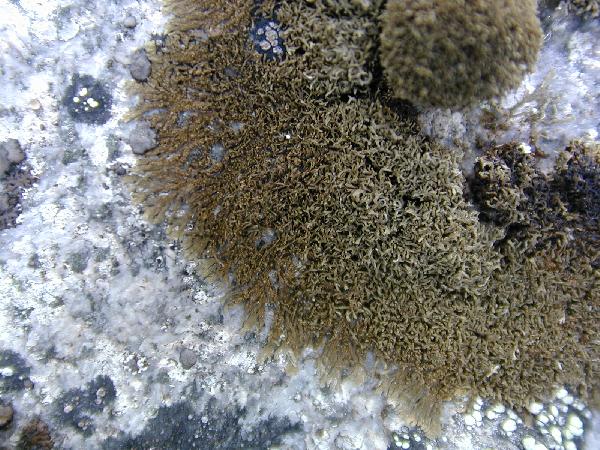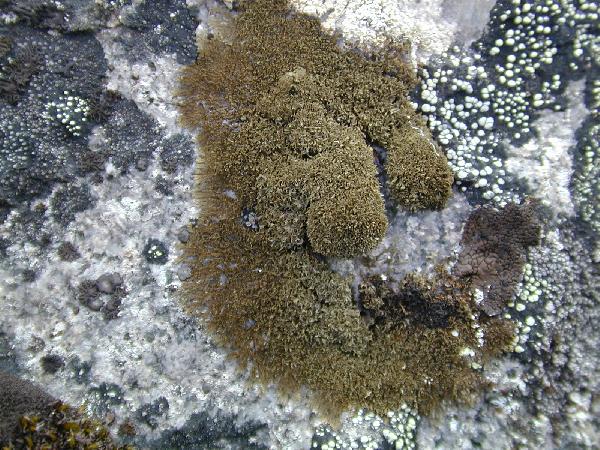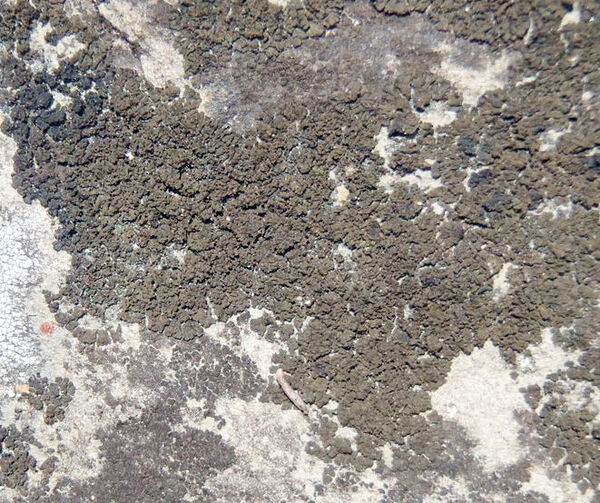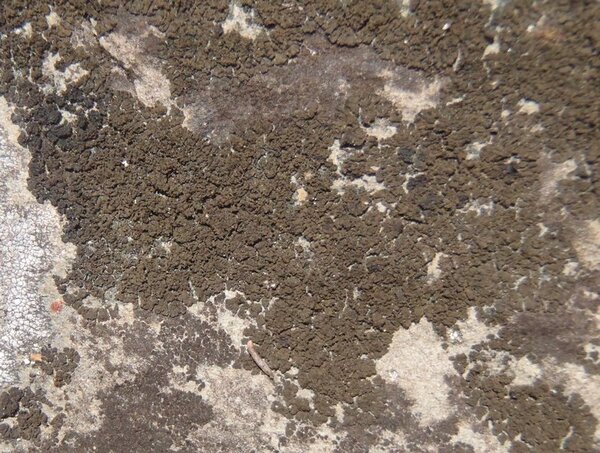Placynthium pannariellum (Nyl.) H. Magn.
Förteckning Skand. Växter, 4 (Lavar): 24, 1936.. Basionym: Pterygium pannariellum Nyl. - Not. Sällsk. Fauna Fl. Fenn. Förh., Ny Ser., 1: 236, 1859.
Synonyms:
Distribution:
Description: Thallus crustose-placodioid, dark olive-green to olive-brown, forming 2-3(-5) cm wide rosettes, sometmes delimited by a bluish prothallus. Central parts breaking into irregularly shaped 1-2.5 mm wide and 0.4-0.8 mm thick areoles covered in isidioid, coralloid secondary lobules, sometimes forming a thick, densely isidiate, areolate crust; marginal lobes convex, 0.5-1.5(-2) x 0.1-0.3 mm, 75-80(-120) µm thick, sparingly branched, finely striate, loosely attached. Upper cortex thin, olivaceous, of a single row of small cells, medulla thick, whitish, of densely aggregated, robust, somewhat elongated hyphae which are periclinally arranged or fan-shaped towards the surface; lower cortex dark, paraplectenchymatous, with dark rhizohyphae. Apothecia rare, lecideine, up to 1 mm across, with a brown-black disc and a distinctly paler proper margin. Epithecium blue green; hymenium colourless, up to 115 μm high, I+ blue; paraphyses septate, sparingly branched; hypothecium pale brown. Asci 8-spored, apically thickened, only the ascus wall amyloid. Ascospores (2-)3-septate, hyaline, ellipsoid, 15-21 x (3-)4-6(-7) μm. Photobiont cyanobacterial, Scytonema-like. Spot tests: all negative. Chemistry: without lichen substances.Note: often submerged on siliceous rocks along rivers, lakes and lake outlets; widespread in Europe but much more common in Fennoscandia, with some records from the Alps, outside Italy; to be looked for in the Italian Alps.
Growth form: Crustose placodiomorph
Substrata: rocks
Photobiont: cyanobacteria, filamentous (e.g. Nostoc, Scytonema)
Reproductive strategy: mainly asexual, by isidia, or isidia-like structures (e.g. schizidia)
Periodically submerged (e.g. in creeks)
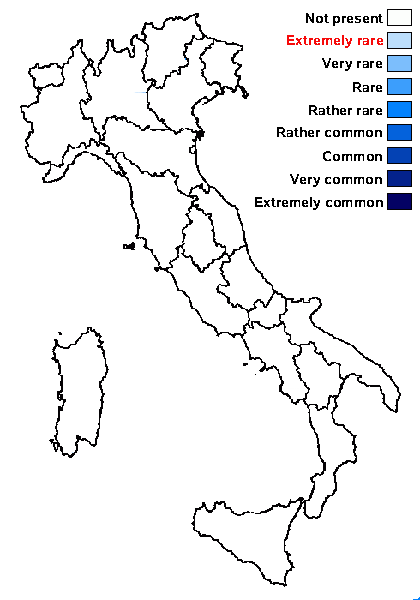
Predictive model
Growth form: Crustose placodiomorph
Substrata: rocks
Photobiont: cyanobacteria, filamentous (e.g. Nostoc, Scytonema)
Reproductive strategy: mainly asexual, by isidia, or isidia-like structures (e.g. schizidia)
Periodically submerged (e.g. in creeks)

Predictive model
 INDEX FUNGORUM
INDEX FUNGORUM
 GBIF
GBIF
